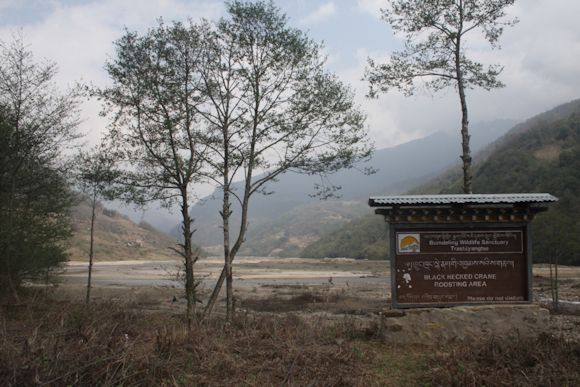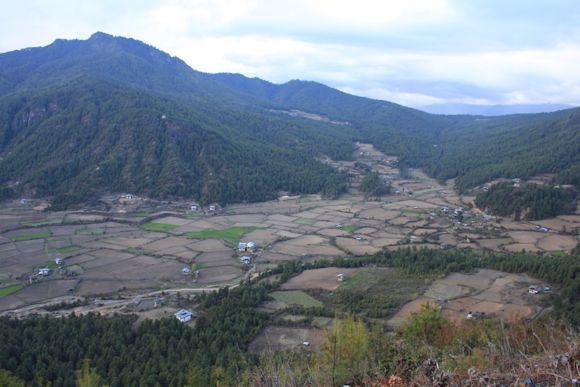Bhutan’s first two Ramsar Sites
 The Himalayan kingdom of Bhutan acceded to the Convention on Wetlands on 7 May 2012, and the Convention therefore came into force for Bhutan on 7 September. The paperwork has recently been completed for Bhutan's first two Wetlands of International Importance, and Ramsar's Nessrine Alzahlawi has prepared the following site descriptions for the Annotated Ramsar List, based upon the information provided by the Contracting Party.
The Himalayan kingdom of Bhutan acceded to the Convention on Wetlands on 7 May 2012, and the Convention therefore came into force for Bhutan on 7 September. The paperwork has recently been completed for Bhutan's first two Wetlands of International Importance, and Ramsar's Nessrine Alzahlawi has prepared the following site descriptions for the Annotated Ramsar List, based upon the information provided by the Contracting Party.
Bumdeling. 07/05/12; Tashiyangtse Dzongkhag; 142 ha; 27°40'23"N 091°26'29"E. Wildlife Sanctuary. One of the glacial valleys northeastern Bhutan, it was a rice-producing floodplain until a series of floods washed away the paddy fields and left it fallow with sandy soil. It is home to at least 74 bird species, including the vulnerable Black-necked Cranes (Grus nigricollis) that migrate from the Tibetan plateau each year to winter at the site. Other endangered species recorded at the site include the Snow Leopard (Panthera unica), Tiger (Panthera tigris), Asiatic Wild Dog (Cuon alpines primaevus) and Himalayan Musk Deer (Moschus leucogaster). Located at 1,900 to 2,000 meters above sea level, the fairly isolated valley is at a much lower altitude than other crane wintering areas in Bhutan and is comparatively warmer with a warm-broad leaf forest dominating the area. Alder (Alnus nepalensis), Maple (Acer sp.) and Birch (Betula sp.), found in and around the wetland, are used for making traditional household items and represent the main source of income for some communities in the area. The river Kholong Chhu and its three tributaries flow through the wetland; while the tributaries provide the local communities with a source of water for irrigation and drinking, the main river will be the site of a hydropower project 35km south of the wetland, which will not impact on the site itself. Ramsar Site no. 2032. Most recent RIS information: 2012.

Khotokha. 07/05/12; Wangdue Dzongkhag; 114 ha; 27°25'55"N 89°59'33"E. Located west of the Black Mountain range, Khotokha wetland is one of the sources for the tributaries of the Puna Tsang Chhu river. The water seeping out of the marshes form small gully streams that accumulate and flow south, providing drinking water and irrigation water for potato farms, the main cash crop of the area. The subalpine shrub marsh, consisting of peat bogs and fens, is one of the last remaining places in Bhutan where summer-winter migrations of farmers are practiced. The site provides one of the main wintering sites in the biogeographic region for the vulnerable Black-necked Crane (Grus nigricollis) and is also home to other endangered species such as the Himalayan Musk Deer (Moschus leucogaster) and the Asiatic Wild Dog (Cuon alpines primaevus). The cranes winter at the site due to the good roosting ground in the marshes and feeding ground in the farmlands. The local inhabitants live in harmony with the migratory birds, considering them sacred and a sign of good harvest. However, the number of cranes has been dwindling over the years. Logging activities surrounding the wetland are leading to noise pollution and increased sedimentation of the rivers. Ramsar Site no. 2033. Most recent RIS information: 2012.
